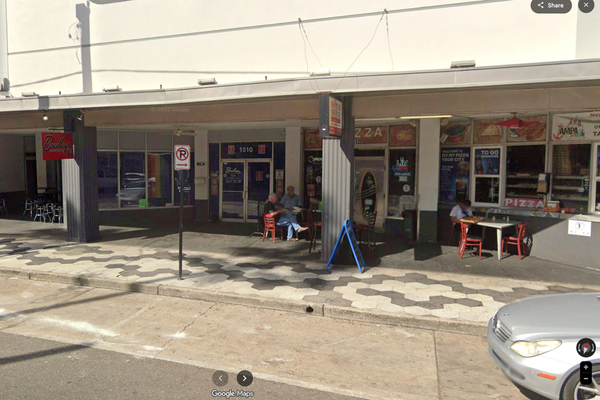
SailGP’s dolphin tracking is just one of a handful of innovative Canterbury-based projects providing solutions to human problems while putting the environment front and centre | Content partnership
Catamarans slicing across the surface of Whakaraupō Lyttelton Harbour at speeds of up to 100kph pose an obvious risk to native marine mammals, especially the vulnerable upokohue Hector’s dolphin, of which just 15,000 remain.
During the ITM Sail Grand Prix in March, a two-day event which brought nine F50 foiling catamarans and 200 spectator boats to Whakaraupō, the very real danger of harming dolphins was minimised through the deployment of new technology.
Before and during the races, which have been compared to Formula 1 on water, unobtrusive floating buoys fitted with passive acoustic monitoring devices and AI “brains” were able to detect any dolphins that approached the harbour in real time and allow race organisers to take action.
Internet of Things
Though undoubtedly the most high-profile, SailGP’s dolphin tracking is just one of a handful of innovative Canterbury-based projects providing solutions to human problems while putting the environment front and centre, each supported by Spark, the country’s largest telecommunications and digital services company.
Across the Port Hills in partnership with Christchurch City Council and environmental monitoring company Adroit, sensors in the Avon River are testing water quality every 15 minutes, and in Waitākiri Bottle Lake Forest fire conditions are continuously monitored by 360-degree cameras and Internet of Things sensors which share data with Fire and Emergency NZ. (Internet of Things is the network of physical objects embedded with technology that allows them to measure and collect data, and send that insight to end users.)
“The technology is constantly changing – a lot of solutions exist today that businesses and communities don’t necessarily know exist,” says Michele Wong, Spark’s IoT lead. “The environmental impacts and productivity efficiency impact go side by side. It’s a no-brainer, really.”
Tech for a better future
Wong points to research commissioned by Spark that found that digital technology could help reduce 7.2 million tonnes of New Zealand’s carbon emissions by 2030, or 42 percent of the reductions the Government has pledged to achieve. Examples include monitoring systems for refrigerators that store vaccines (to avoid waste) and other remote monitoring solutions which reduce the need for people to commute in to work.
A simple thing such as trackers in fleet vehicles (or farm equipment, rental trailers, office laptops, etc) means businesses can now monitor their gear’s location remotely. Otherwise people are employed to literally hunt down pieces of missing equipment which usually involves flying or driving to the location. IoT sensors can instantly track items’ usage statistics and location.
“Spark has a real commitment and purpose around enabling Aotearoa with technology that allows a better future,” says Wong. “The main areas I’m excited about are reducing carbon emissions, helping protect the environment, and improving efficiency, which can often help businesses reduce their footprint. I’ve got a seven-year-old and a ten-year-old, and I want to do my part. That’s what gets me out of bed.”
Receiving texts from dolphins
Unlike devices that drive animals away using sonar, the buoys used during SailGP were an unobtrusive solution, explains Dr Matt Pine, Principal Scientist of Underwater Acoustics at the Auckland-based Styles Group, which designed the system. It can be used to detect the presence of any vocalising marine mammal species.
The “ear” or underwater microphone (a hydrophone) below the buoy measures changes in water pressure in real time, taking up to 500,000 samples per second, meaning that dolphins could be detected hundreds of metres outside the race zone and tracked. If a dolphin approached, the device would ping a registered phone. “It’s as if the animal comes into the bay and sends a text message to let you know it's there,” says Pine.
The data collected each day was uploaded and processed overnight, allowing the AI brain to learn and retrain itself based on changing conditions. “The ‘voice’ part of the system is the communication network provided by Spark, which gave priority to the network so it would never drop out,” says Pine. “If there’s an animal there, we have to know about it.”
Fighting fire with sensors
In Waitākiri Bottle Lake Forest, there is a similar urgency about receiving information in real time to prevent damage to trees, animals and nearby housing in case of fire. Sensors installed 12 months ago send updates on the wind speed, temperature and air quality to Fire and Emergency NZ, allowing for a quick response to danger.
Obviously, keeping track of temperature changes and weather conditions is increasingly important because of climate change, and having real-time information during the 2017 Port Hills fires and a spate of deliberately lit fires in 2020 could have helped prevent damage.
“Our hope is with events like that we’d know much quicker and be able to put out fires much faster, which makes all the difference,” says Michael Healy, Smart Cities Programme Manager for Christchurch City Council.

This technology is widely used in Australia, where fire danger is greater, but is “unproven in a New Zealand context”, says Healy. The past 12 months have been unusually wet but with a hot El Niño summer expected, the sensors may soon get more of a workout. Wayne Hamilton, Senior Advisor Community Readiness and Recovery at Fire and Emergency New Zealand, reported one incident around Guy Fawkes last year when a sensor reacted to a firework being set off.
The sensors will be trialled for another 12 months before Christchurch City Council makes a call on whether to make them a permanent solution. Meanwhile, inspired by Christchurch, Selwyn Council has installed its own sensors in the forest near Darfield.
A healthier Avon River
Christchurch’s Ōtākaro Avon River is a much-loved landmark and recreational spot where people kayak, swim, and fish. Many fish, such as tuna (eels) and whitebait live there. Yet it suffers from the effects of 150 years’ worth of pollution – heavy metal runoff from roofs, roads and car brake pads, sediment discharges, and the occasional sewage leak and accumulated dog poo. During heavy rain the pollution spikes because of stormwater inputs.
“The intent is to reverse that damage and get the river into a healthier state,” says Healy. “It’s a long-term project, it will take decades.”
For many years comprehensive manual water testing has been used to assess the river’s health and to protect the public. This is effective but there is a time lag between taking water samples and getting lab results. New sensors installed in four river locations before Christmas 2022 could change all that.

Similar to Waitākiri Bottle Lake Forest, data is collected in real time and continuously. If there is a change in water quality, the council can react immediately. A team has spent the past five months calibrating the sensors, working out the kinks in the system and preparing for data collection.
The technology used in these sites is already a proven success overseas, with people finding all sorts of unexpected applications for the wealth of information collected, including planning their journeys to nature reserves using fire detection data. Wong is excited to see how people in Aotearoa adapt it to their own needs.
“Hospital staff, for example, can use the pollen count data from the sensors to plan for a number of expected patients with respiratory issues.”
Spark is a founding partner of Newsroom







